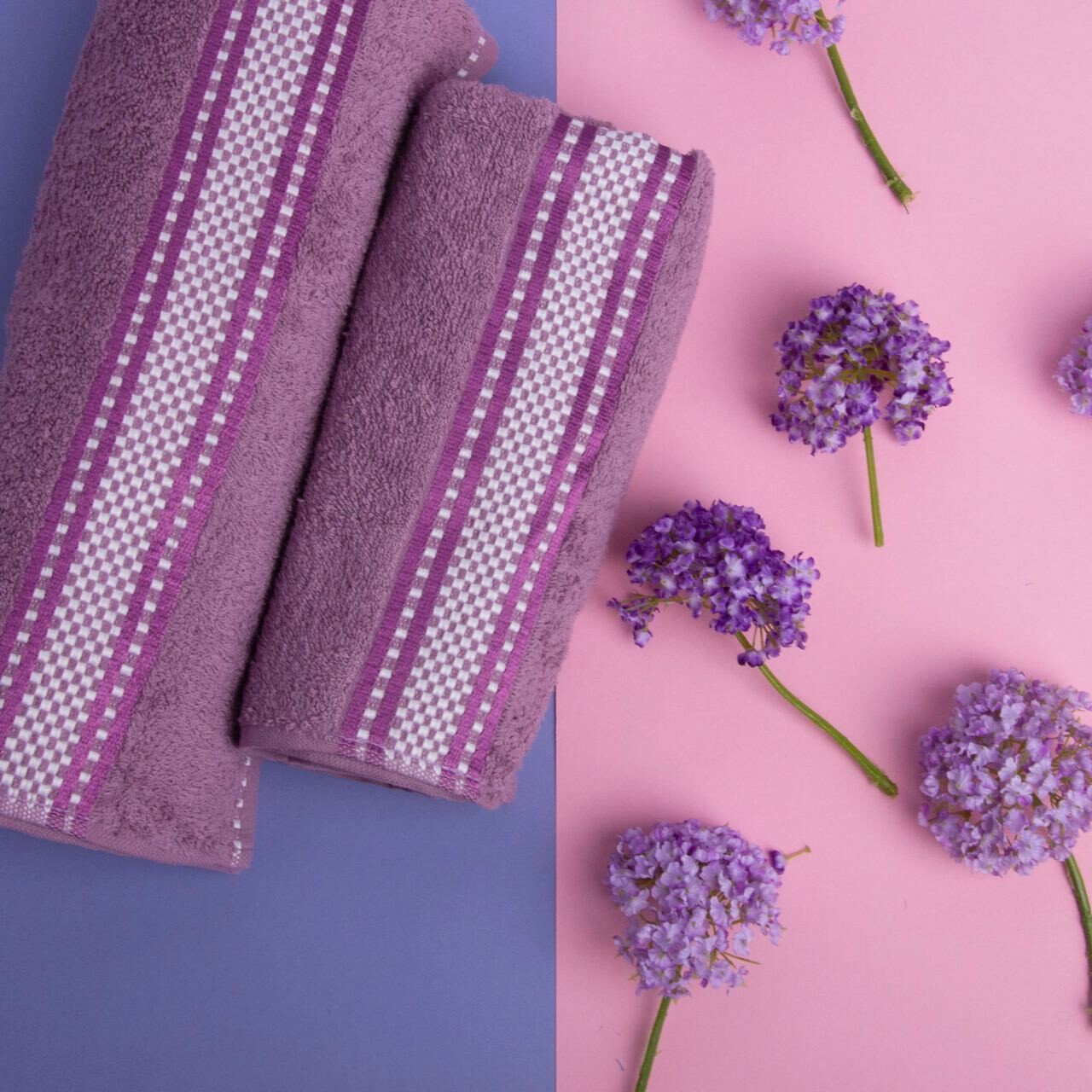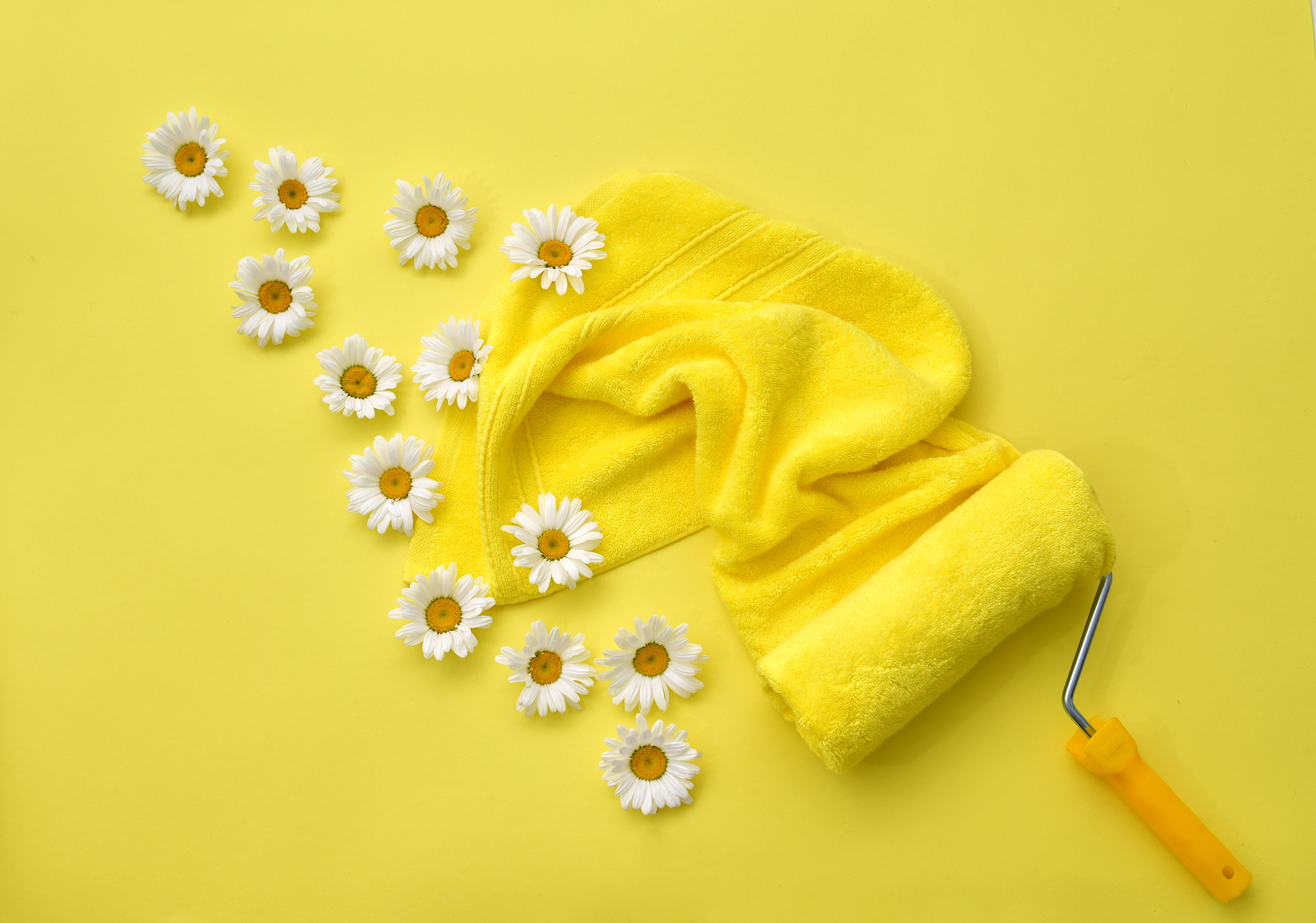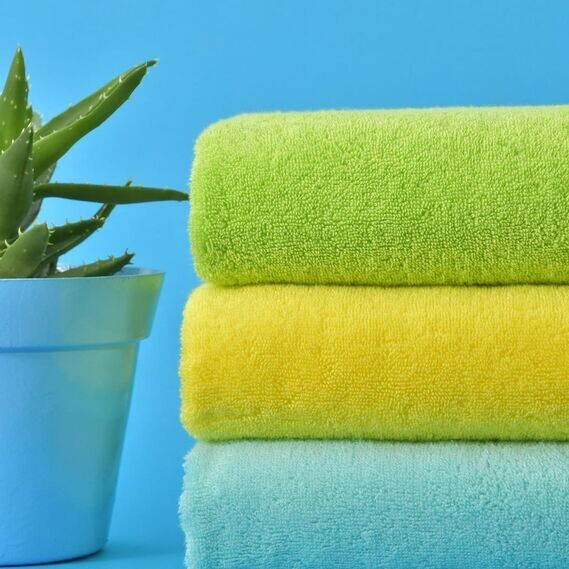 Terry towels are one of the most popular types of towels, known for their pleasant softness and excellent absorbency. They are beautiful, stylish home textiles, and their range offers options for all occasions:
Terry towels are one of the most popular types of towels, known for their pleasant softness and excellent absorbency. They are beautiful, stylish home textiles, and their range offers options for all occasions:
- Bath Towels: Soft items with high absorbency, which is important for comfort after a shower or bath.
- Face and Hand Towels: These are sufficiently soft and absorbent, but they dry faster and are easier to wash.
- Sports and Beach Towels: They are lightweight and dry quickly.
One of the key characteristics affecting the quality of a terry towel is its density. This parameter directly influences the properties for which terry towels are valued.
Properties of Terry Towels and Fabric Density
The density of a towel is measured in grams per square meter (g/m²) and has a direct impact on its properties, such as softness, absorbency, durability, and more.
Softness
 High Density (400 to 600 g/m² and above): Towels with high density are usually softer and fluffier. They provide pleasant tactile sensations and comfort during use.
High Density (400 to 600 g/m² and above): Towels with high density are usually softer and fluffier. They provide pleasant tactile sensations and comfort during use.
Low Density (below 400 g/m²): These towels are less soft and thinner. They are lightweight and compact, making them convenient for travel and active leisure.
Absorbency
High Density: Towels with higher density absorb moisture better. This is due to the greater number of loops per square meter, which can hold more water. Such towels are ideal for use after a shower or bath.
Low Density: Towels with low density may be less effective at absorbing moisture, but they dry faster, which can be useful in high-humidity conditions or with frequent use.
Durability
High Density: Towels with high density are more resistant to wear and maintain their properties even after multiple washes. They retain their shape, softness, and absorbency for a longer time.
Low Density: Towels with low density may be less durable and lose their properties more quickly, especially with frequent use and washing.
Drying Time
High Density: Towels with high density take longer to dry due to the greater amount of material that retains moisture. This can be a drawback in situations where quick drying is required.
Low Density: Towels with low density dry faster, which can be an advantage with frequent use and the need for quick drying.
Optimal Density Selection for Terry Towels
The choice of optimal density for a terry towel depends on your preferences and needs:
- Bath Towels: It is recommended to choose towels with a density of 400 to 600 g/m². They provide maximum softness and absorbency, which is important for comfort after a shower or bath.
- Face and Hand Towels: Towels with a density of 300 to 400 g/m² are suitable. They are sufficiently soft and absorbent but dry faster and are easier to wash.
- Sports and Beach Towels: Towels with a density of 250 to 350 g/m² are optimal. They are lightweight, dry quickly, and are convenient to carry.
Regardless of the chosen density, a quality terry towel will become an indispensable part of your daily care routine and will delight you for a long time.
Pile Length: How It Affects the Main Characteristics of Terry Towels. Optimal Options
 The pile length of a terry towel is another key factor influencing its characteristics. The pile consists of fabric loops that give the towel volume and texture.
The pile length of a terry towel is another key factor influencing its characteristics. The pile consists of fabric loops that give the towel volume and texture.
Softness
Long Pile (5 mm and above): Towels with long pile provide maximum softness and fluffiness. They are pleasant to the touch and create a sense of luxury, making them ideal for use after a shower or bath.
Medium Pile (3-5 mm): These towels offer a good balance between softness and practicality.
Short Pile (less than 3 mm): Towels with short pile may be less soft but are still comfortable. These towels are usually flatter and denser.
Absorbency
Long Pile: Towels with long pile have high absorbency, as each loop can hold more moisture. This makes them an excellent choice for bath towels.
Medium Pile: Towels with medium pile also have good absorbency, suitable for most daily needs.
Short Pile: Towels with short pile may absorb less moisture compared to towels with long pile, but they can still be effective for hands and face.
Durability
Long Pile: Towels with long pile may be more prone to wear and loop pulling, especially with frequent use and washing.
Medium Pile: Towels with medium pile have good durability.
Short Pile: Towels with short pile are usually more durable, as they are less prone to loop pulling and wear.
Drying Time
Long Pile: Towels with long pile take longer to dry because each loop holds more moisture. This can be a drawback in high-humidity conditions or when quick drying is needed.
Medium Pile: Towels with medium pile have moderate drying time, making them a practical choice for daily use.
Short Pile: Towels with short pile dry faster, making them convenient for frequent use and conditions requiring quick drying.
Regardless of the pile length, a quality terry towel will become an indispensable element of your daily care routine and will delight you for a long time.
Terry Towels with Decor: Quality of Finishing, Quality of Dye, Impact on Towel Properties
Decorative terry towels add elegance and style to your home. However, when choosing such towels, it is important to consider the quality of finishing and dye to ensure durability and preserve all the beneficial properties of the towel.
Quality of Finishing
The finishing of terry towels involves several stages, such as edge stitching, creating decorative elements, and securing threads. High-quality finishing ensures that the towel will be durable and functional.
Edge Stitching: The edges should be neat and strong to withstand multiple washes. Decorative embroideries and patterns should be made using quality threads. All threads should be securely fastened.
Quality of Dye
The quality of dye plays a key role in the durability and aesthetics of a decorative terry towel. The dye should be resistant to multiple washes and safe for the skin.
Durability: Towels with quality dye retain their brightness and color saturation even after numerous washes.
Skin Safety: The dye used for decorating towels should be hypoallergenic and not cause skin irritation. Natural and safe dyes ensure comfort and safety.
Care Tips for Terry Towels
Proper care for terry towels extends their lifespan and maintains their softness, absorbency, and aesthetic appearance.
Washing
Regular Washing: Regular washing of terry towels helps maintain their cleanliness and prevents the accumulation of dust, bacteria, and unpleasant odors. It is recommended to wash towels after 3-4 uses.
Washing Temperature: Wash terry towels at a temperature of 40-60°C. High temperatures help kill bacteria and dirt but should not be too high to avoid damaging the color of the towels.
Detergents: Use detergents that do not contain aggressive chemicals and bleaches. They will preserve the color of the towels and not damage the fibers. Avoid using fabric softeners, as they can reduce the absorbency of the towels.
Drying
Air Drying: Dry towels in fresh air, preferably in the shade, to avoid fading from direct sunlight. This will help maintain the softness and fluffiness of the pile.
Tumble Drying: If you use a tumble dryer, choose a low or medium temperature setting. High temperatures can damage the fibers and reduce the softness of the towel. Add a few tennis balls to the dryer to keep the towels fluffy.
Storage
Dry and Ventilated Storage: Store terry towels in a dry and ventilated place to prevent the development of mold and unpleasant odors. Avoid plastic bags, which can cause moisture condensation.
Choosing the ideal terry towel requires considering several key factors, such as density, pile length, quality of finishing, and care. Paying attention to these aspects will help you find a towel that provides maximum comfort. Regardless of your preferences, a quality terry towel will become an indispensable element of your daily care routine and will delight you for a long time.
